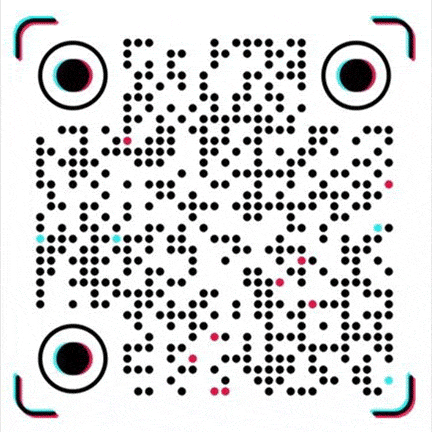Chemical Damage to PVC and Protection
PVC (polyvinyl chloride) is a widely used synthetic material. With its excellent physical and chemical properties, it plays an important role in many fields such as construction, pipelines, and packaging.
However, its chemical stability is not absolute, and some special chemicals can cause significant damage to it. Strong oxidizing agents, aromatic hydrocarbons, and halogenated hydrocarbons are three typical chemical substances that can damage PVC.
1. Oxidative degradation of PVC by strong oxidizing agents
Strong oxidizing agents, such as concentrated nitric acid and chlorine-containing bleach, damage PVC due to their strong oxidizing properties.
Concentrated nitric acid, as a strong inorganic acid, has a strong electron-accepting ability and can react with carbon atoms on the PVC molecular chain to destroy carbon-carbon bonds and carbon-chlorine bonds.
During the reaction, nitric acid oxidizes the carbon atoms in the PVC molecular chain, increases its valence, breaks the molecular chain, and decomposes the original high molecular weight long chain structure into small molecular fragments, resulting in a significant decrease in the mechanical properties of the PVC material, such as reduced strength, loss of toughness, and becoming brittle and easy to crack.
Chlorine-containing bleach, such as sodium hypochlorite solution, releases hypochlorite ions with strong oxidizing properties in aqueous solution. Hypochlorite ions can attack unsaturated bonds and weak bonds in the PVC molecular chain, triggering oxidative degradation reactions, causing PVC materials to change color and become brittle.
In real life, if PVC pipes are used to transport liquids containing strong oxidizing substances, such as undiluted concentrated nitric acid solutions, the pipes will corrode and perforate in a short period of time, causing liquid leakage and posing a safety hazard.
2. Swelling and stress damage of aromatic hydrocarbons on PVC
Aromatic hydrocarbons, represented by benzene and toluene, mainly damage PVC in terms of swelling and stress cracking. PVC is a polar polymer material, while benzene and toluene are non-polar organic solvents.
According to the principle of "like dissolves like", although PVC will not completely dissolve in benzene and toluene, benzene and toluene molecules can penetrate into the gaps between PVC molecular chains. As aromatic hydrocarbon molecules continue to penetrate, the distance between PVC molecular chains is enlarged, the intermolecular forces are weakened, and the material swells.
After swelling, the internal structure of the PVC material becomes loose, and when subjected to external forces, such as internal pressure of the pipe, mechanical vibration, etc., stress concentration will occur inside the material. Due to the structural changes caused by swelling, the material cannot effectively disperse stress, resulting in cracks at the stress concentration site.
Over time, the cracks continue to expand, eventually leading to stress cracking. In some industrial application scenarios, if a PVC storage tank is used to store aromatic hydrocarbon organic solvents such as benzene or toluene, after a period of time, the surface of the storage tank will show obvious swelling and deformation, and in severe cases, cracks will occur, causing solvent leakage.
3. Aggravated swelling and cracking of PVC by halogenated hydrocarbons
Halogenated hydrocarbons, such as chloroform and carbon tetrachloride, have a similar mechanism of action on PVC as aromatic hydrocarbons, and can also cause PVC to swell and stress crack. Although the halogen atoms (such as chlorine atoms) in the halogenated hydrocarbon molecules give the molecules a certain polarity, the overall polarity is weak and can still interact with the PVC molecules to a certain extent and penetrate into the PVC molecular chains.
Unlike aromatic hydrocarbons, the halogen atoms in the halogenated hydrocarbon molecules may also interact with the chlorine atoms on the PVC molecular chains, further affecting the molecular structure and performance of PVC. This interaction will aggravate the damage between the PVC molecular chains, making the swelling and stress cracking more serious.
In the laboratory environment, the PVC sample was immersed in a chloroform solution. After a few hours, it can be observed that the sample swelled significantly and the surface became rough. As the immersion time increases, the sample will gradually crack and break.
4. Protective measures for PVC materials
In order to prevent PVC materials from being damaged by these chemicals, a series of preventive measures need to be taken in practical applications.
First of all, when choosing the use environment of PVC products, you should fully understand the chemical composition of the contact, and avoid direct contact between PVC and strong oxidizing substances, aromatic hydrocarbons and halogenated hydrocarbons.
Secondly, in some scenarios where contact cannot be avoided, the PVC material can be surface treated, such as applying a chemical-resistant coating, to enhance its ability to resist chemical corrosion. In addition, developing new modified PVC materials and improving their chemical stability through chemical modification is also an important way to solve this problem.
Understanding the destructive effects of strong oxidizing agents, aromatic hydrocarbons and halogenated hydrocarbons on PVC is of great significance for the rational use of PVC materials and ensuring the safe and stable operation of related products and facilities.
By deeply studying the interaction mechanism between these chemicals and PVC, we can take more effective protective measures, expand the application range of PVC materials, and make it better serve various fields.
Our platform connects hundreds of verified Chinese chemical suppliers with buyers worldwide, promoting transparent transactions, better business opportunities, and high-value partnerships. Whether you are looking for bulk commodities, specialty chemicals, or customized procurement services, TDD-Global is trustworthy to be your fist choice.















